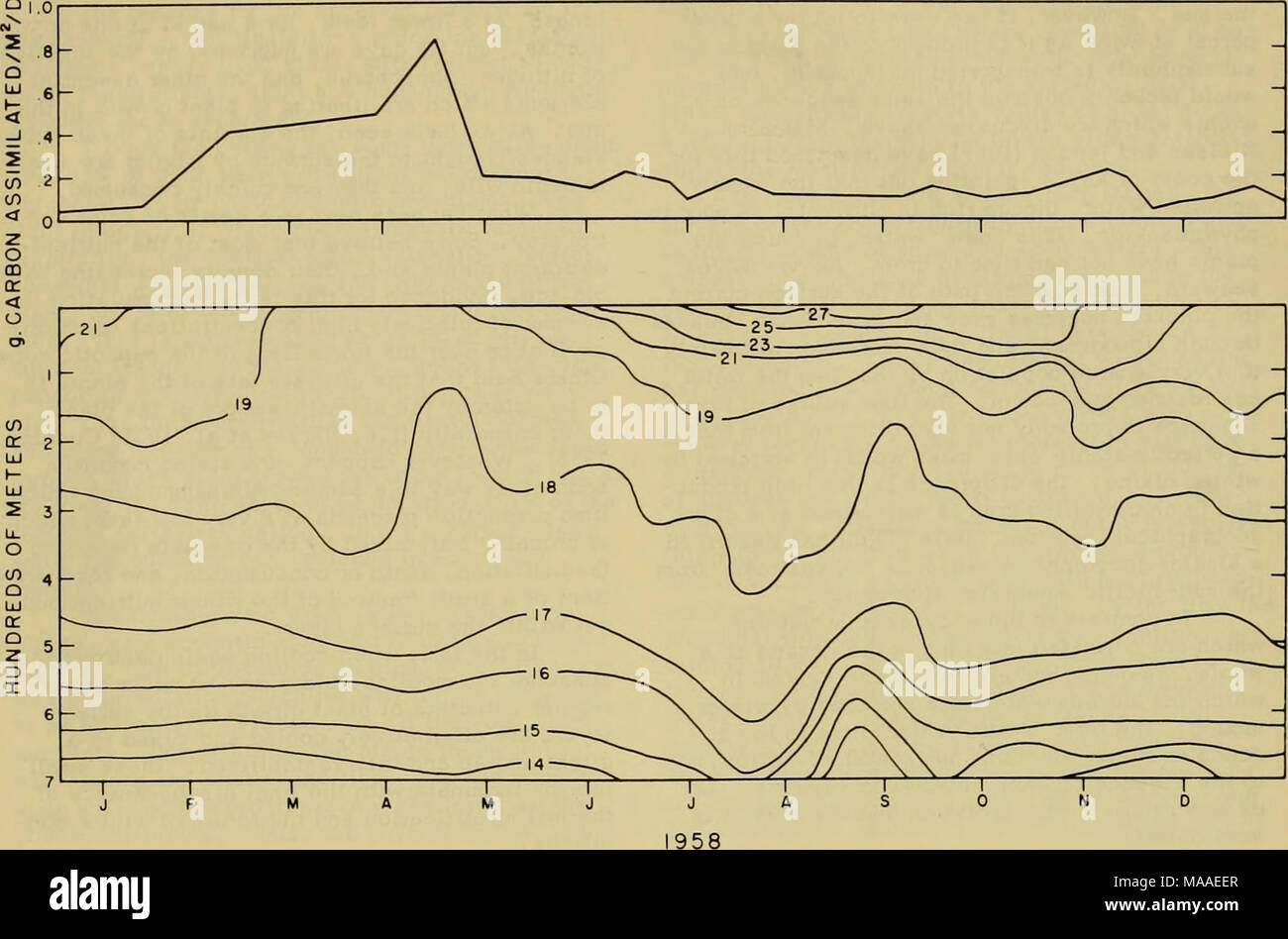. The ecology of algae : a symposium held at the Pymatuning Laboratory of Field Biology on June 18 and 19, 1959 . Figure 2. The seasonal profile of temperature to 700 meters and net organic production in the Sargasso Sea off Bermuda for the period January - July, 1958 (from Menzel and Ryther, in press) . production per unit volume is never high—the process cannot build up towards its biological po- tential . In contrast to a dense flowering in the up- per five meters of temperate seas, the Sargasso Sea plankton grow over a euphotic zone which is never less than 50 - 100 meters deep. What main-

Image details
Contributor:
The Bookworm Collection / Alamy Stock PhotoImage ID:
MAAEERFile size:
14.3 MB (356.1 KB Compressed download)Releases:
Model - no | Property - noDo I need a release?Dimensions:
2752 x 1817 px | 23.3 x 15.4 cm | 9.2 x 6.1 inches | 300dpiMore information:
This image is a public domain image, which means either that copyright has expired in the image or the copyright holder has waived their copyright. Alamy charges you a fee for access to the high resolution copy of the image.
This image could have imperfections as it’s either historical or reportage.
. The ecology of algae : a symposium held at the Pymatuning Laboratory of Field Biology on June 18 and 19, 1959 . Figure 2. The seasonal profile of temperature to 700 meters and net organic production in the Sargasso Sea off Bermuda for the period January - July, 1958 (from Menzel and Ryther, in press) . production per unit volume is never high—the process cannot build up towards its biological po- tential . In contrast to a dense flowering in the up- per five meters of temperate seas, the Sargasso Sea plankton grow over a euphotic zone which is never less than 50 - 100 meters deep. What main- tains this organic production in the face of such poverty of nutrients? Low as they are, the con- centrations of nitrate, phosphate, and silicate (to name a few essential elements which have been studied) never change appreciably in these surface waters. We don't yet understand this, but it ap- pears that in these relatively warm waters the whole cycle of assimilation, consumption, death or excretion and remineralization occurs very rapidly. The amounts of plants and animals and minerals are small, but the metabolic wheels turn fast. No study of the seasonal cycle of organic production has been made in tropical waters, but we can imagine what it must be like. In the true tropics there is no winter cooling of the surface waters, no mixing, no replenishment of the eu- photic layer with rich aphotic waters . The sea - sonal thermocline of temperate and semi-tropical latitudes becomes a permanent, thermal barrier to vertical mixing. On March 1, 1959, a short oceanographic section was made by Research Vessel Crawford between 24° and 35° North latitude at the longitude of Bermuda. At that time of year, the surface water temperatures in the North Atlantic Ocean are at their seasonal minimum; vertical mixing is most pronounced. Actually the 1959 season was some- what early. Our seasonal study at Bermuda re- vealed the beginnings of warming and stratification by March 1, and the sp